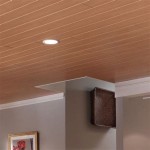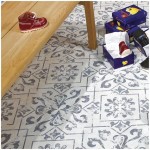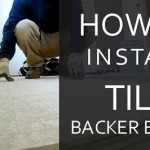Putting Luxury Vinyl Plank Flooring over Ceramic Tile: What You Need to Know
Introduction
Luxury vinyl plank (LVP) flooring has gained popularity due to its durability, water resistance, and realistic wood or stone-like appearance. Many homeowners are considering installing LVP over existing ceramic tile floors. This article provides comprehensive information on the essential aspects of installing LVP over ceramic tile, including preparation, underlayment, installation techniques, and potential challenges.1. Surface Preparation
Before installing LVP over ceramic tile, proper surface preparation is crucial. Ensure the tile surface is clean, dry, and level. Remove any dirt, dust, or debris with a vacuum or broom. Check for uneven areas or loose tiles and make necessary repairs. Fill any cracks or gaps with a suitable filler to create a smooth and stable base.2. Underlayment
An underlayment is essential for LVP installations over ceramic tile. It provides cushioning, reduces noise, and compensates for minor subfloor imperfections. Choose an underlayment that is compatible with both LVP and ceramic tile. Cork, foam, and rubber underlayments are popular options.3. Installation Techniques
LVP can be installed over ceramic tile using three common techniques: glue-down, floating, and click-lock. - Glue-down method involves applying adhesive directly to the ceramic tile and securing the LVP planks. It provides a strong and durable bond but requires more time and effort. - Floating method involves installing LVP planks over an underlayment without gluing them to the subfloor. This method is faster but may be less durable than glue-down installations. - Click-lock method utilizes planks with interlocking edges that snap together. This method is quick and easy, making it suitable for DIY enthusiasts.4. Expansion Gaps
Expansion gaps are important to prevent LVP flooring from buckling or warping due to temperature and humidity fluctuations. Leave approximately 1/4-inch gap around the perimeter of the room and around obstacles like walls, columns, and cabinets.5. Transitions
Transitions are used to connect LVP flooring to other flooring types or to create a smooth transition between different areas. Choose transitions that match the color and style of your LVP and ensure proper leveling for a seamless look.Potential Challenges
- Height difference: Installing LVP over ceramic tile may result in a height difference between the new flooring and adjoining rooms. Plan accordingly for transitions and ensure doorways have sufficient clearance. - Tile condition: Loose or cracked tiles can compromise the stability of the LVP installation. Repair or replace any damaged tiles before proceeding with LVP installation.Conclusion
Installing LVP over ceramic tile can enhance the aesthetics and functionality of your space. By carefully following the preparation, installation, and transition techniques outlined in this article, you can achieve a durable and beautiful LVP floor. Consider seeking professional assistance if you encounter any technical difficulties or have concerns about the condition of your existing ceramic tile floor.
New Vinyl Plank Flooring Over Tile Table And Hearth

New Vinyl Plank Flooring Over Tile Table And Hearth

New Vinyl Plank Flooring Over Tile Table And Hearth

New Vinyl Plank Flooring Over Tile Table And Hearth

What Type Of Flooring Can You Install Over Ceramic Tile

New Vinyl Plank Flooring Over Tile Table And Hearth

Should You Install Vinyl Floor Over Tile

Can You Install Vinyl Plank Over Tile Flooring America

Can You Install Vinyl Plank Over Tile Flooring America

Can Vinyl Flooring Be Laid Over Tiles Ox
Related Posts








